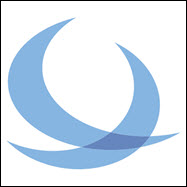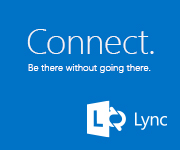Trusted Traveler Program – My Journey to Faster, Easier Security Screenings at the Airport
I travel a LOT. 200 days away last year – nearly all of them weekdays. I am continuously streamlining my travel process, from how/what I carry to how I dress, to when/where to arrive and park. Doing so has made the travel process much easier. And easier means more time at home or client sites, and less time frustrated at airports.
Last October, the TSA and some airlines rolled out a program called Known Traveler Screening. This program uses the Customs and Border Patrol’s (CBP) Trusted Traveler programs and allows those in the program to go through much quicker security screening by prescreening them. Four airports were in the original pilot, including my home airport, Detroit Metro (DTW). The program is now being expanded to dozens more airports throughout the country.
CBP has several programs that help streamline travel for those going between the U.S. and other countries. Global Entry deals with entry into the U.S. by U.S. citizens from abroad. Nexus focuses on travel between the U.S. and Canada. And SENTRI focuses on travel between the U.S. and Mexico. In order to be a Trusted Traveler, you need to be enrolled in at least one of the programs.
Here is the process I went through:
January 15th, 2012 (Day 0):Â I enrolled in CBP’s Global Entry and Nexus programs using the Global Online Enrollment System (GOES). My company has an office in London, plus there are always some conferences in other countries, and, who knows, maybe a client or two. So Global Entry made sense. I live near Detroit, which is just across the river from Windsor Canada – home of some nice dinner establishments and a big casino and entertainment venue. So that program made sense.
Enrollment requires a fairly detailed form submission, including passport and drivers license info, residence and contact info, and employment info going back ~7 years. It also requires a $50 application fee. Once submitted, you’re advised to check the status of the application regularly. In my case, I checked every couple of days, and each time, the status read “Pending Review”.
February 24th (day 40):Â I received an email stating there had been a change in status for my application. Upon logging into the GOES site, my application had a link for “conditional approval notification”. Clicking the link showed a form letter stating my application had been processed, and I was “invited” to visit a Nexus Enrollment Center for an interview. To my surprise, I was able to electronically schedule my interview for the following day, a Saturday (really – the government – on SATURDAY?!). The local Nexus Enrollment Center was at the foot of the infamous Ambassador Bridge, the main crossing between Detroit and Windsor.
February 25 (day 41): I arrived about a 1/2 hour early for my interview. The Enrollment Center is in a string of office trailers near the bridge. It is staffed by agents from both CBP and the Canadian border service. When I entered, there were about 8 others who had just watched a video. As the video played for me, the others were processed through their interviews. The video was a quick tutorial on how to use the Nexus card for border crossings via auto and air.
Following that, I waited about 5 minutes before I was called. By then, nearly everyone else was already gone. I was asked a few questions about the nature of my travel, as well as some info on the restrictions of traveling into Canada for work purposes. A decal was affixed to my passport for Global Entry. A quick photo and electronic fingerprinting, and I was on my way with some pamphlets. Total time at the building was about 1/2 an hour.
By the time I got home, I had another change in status email. This one was for “Approval Notification” and contained a Nexus number. The same number showed on the main GOES page next to my Trusted Traveler Program link. It is referred to as “Membership Number / PASS ID”. This is where it gets a little confusing.
In doing some more research, it was frustrating to determine the next step, and I thought maybe I had enrolled in the wrong programs. Between CBP, TSA, and the airlines, no one used the same terminology, including program names, processes, requirements, etc. Through some trial and error, as well as reading some travel related forums, I determined that I needed enter a “Known Traveler Number” in the Secure Flight Passenger Data section of my Delta profile. Turns out, the Known Traveler Number is your Trusted Traveler Number, essentially the PASS ID mentioned above.
Further research indicated that it may only be valid for reservations made after the number is added to your profile.
February 26th (day 42): I left for a previously scheduled flight. Going through the Priority security line, I mentioned to the TSA agent performing the credential screening that I had submitted my PASS ID the previous day. She confirmed that the reservation must be made after the PASS ID is added for it to work. So, the normal Priority line for this flight.
March 1st (day 46): My Nexus card arrived in the mail. I was pleasantly surprised. It was less than a week since visiting the Enrollment Center. When it arrives, you must go back to the GOES web site and activate the card, similar to how you activate a new credit card. The card also came with a protective sleeve that prevents the RFID chip from being read while it’s in your wallet.
Friday, March 2nd (day 47): I booked a work related flight for two days later. During the booking process, IÂ confirmed the Secure Flight Passenger Data screen did contain my PASS ID number.
Sunday, March 4th (day 49): When I went through the credential checkpoint, the device that scans my cell phone boarding pass now also displayed a “LLL” to the TSA agent (I believe that was it – but I only got a quick glimpse). I was directed down the Trusted Traveler line instead of the normal backscatter / magnetometer screening area. The Trusted Traveler area was MUCH faster and far more convenient. For one, there was only one other person in line, and I never had to wait for them as the process is too fast. I immediately noticed that there were no white bins – the bane of many a traveler. I was not required to remove my jacket, shoes, or belt, and did not need to empty paper or other items from my pockets – something the normal process requires. I was told to toss my wallet and cell phone into my bag. I walked through a magnetometer (metal detector), and waited MAYBE 15 seconds for my bags to go through x-ray. Entire time from the credential check point to past the entire security area was under 60 seconds. This was VERY cool.
Other than having an overly confusing enrollment process, it was worth the streamlined security line process. I look forward to seeing this rolled out into more of the airports that I travel through.
If you’re with another airline and have gone through the process, let me know your experience.





Follow Me